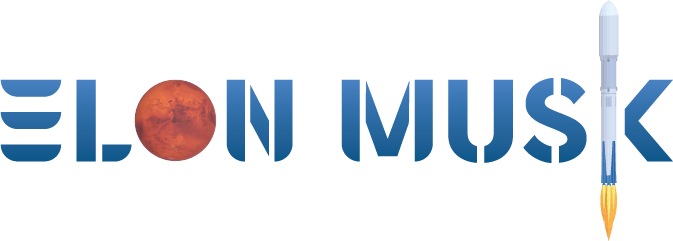
2025 and 2026 Will Be Two Monumental Growth Waves For Tesla
- by Torque News
- Nov 01, 2024
- 0 Comments
- 0 Likes Flag 0 Of 5

Tesla's Strategic Shift: 2025-2026 and Beyond
Tesla, under the leadership of Elon Musk, has consistently pushed the boundaries of the automotive industry with its focus on electric vehicles (EVs), sustainable energy, and autonomous driving technology.
As we look towards 2025 and 2026, Tesla is poised to implement significant strategic shifts, aiming not only to expand its market share but also to redefine transportation through the introduction of lower-cost models and the deployment of the Cybercab robotaxi service.
2025: The Year of Accessibility
Lower Cost Models
Affordability for the Masses: Tesla has been rumored and confirmed through various channels to be introducing new models priced around $25,000 to $30,000. This move is strategic, targeting a broader demographic by making electric vehicles more accessible, thus accelerating the global shift towards sustainability. These models are expected to use the next-generation platform, which promises significant cost reductions in production due to innovations in manufacturing like the "unboxed" assembly process.
Market Impact: By making EVs more affordable, Tesla aims to not only increase its sales volume but also to stimulate broader EV adoption, potentially disrupting the market dynamics that favor traditional internal combustion engine vehicles due to price points.
Design and Features: While details are scarce, discussions on platforms like X suggest that these lower-cost models might share design and technology with the upcoming Cybercab, possibly offering optional driver controls for those not ready for full autonomy.
Progress in Full Self-Driving (FSD)
FSD Adoption: Tesla's Full Self-Driving technology is expected to see significant adoption in 2025, with advancements in AI training leading to versions like FSD V13. The company has set ambitious targets for reducing human interventions, which would increase confidence in the system.
Legislative and Public Acceptance: As Tesla prepares to launch unsupervised FSD in selected regions like California and Texas, legislative frameworks around autonomous vehicles are anticipated to evolve, potentially easing the path for widespread acceptance.
2026: The Cybercab Era Cybercab Production and Deployment
Scaling Up Production: Tesla's goal to produce 2 million Cybercabs annually by the end of 2026 represents a monumental scaling of production. This ambition would likely involve multiple gigafactories operating at full capacity, leveraging Tesla's advanced manufacturing techniques.
Autonomy Without Compromise: The Cybercab, or Robotaxi, is designed without traditional driver controls, emphasizing Tesla's commitment to fully autonomous transportation. This vehicle aims to serve as both a personal transport option and a part of Tesla's ride-hailing network, potentially revolutionizing urban mobility.
Economic and Environmental Impact
Economic Growth: The introduction of the Cybercab could significantly contribute to economic growth through job creation in manufacturing, AI development, and service sectors related to autonomous vehicle operations.
Environmental Benefits: By promoting a shared mobility model, the Cybercab could reduce the number of vehicles on the road, decrease urban congestion, and lower carbon emissions, aligning with Tesla's mission to accelerate the world's transition to sustainable energy.
Challenges Ahead
Regulatory Hurdles: Despite advancements, regulatory challenges remain. Each state or country might have different requirements for autonomous vehicles, which Tesla will need to navigate carefully.
Market Acceptance: Consumer acceptance of fully autonomous vehicles will depend heavily on safety records, cost-effectiveness, and the overall experience provided by Tesla's autonomous fleet.
Technological Reliability: Ensuring the reliability and safety of FSD technology at scale will be paramount. Any significant failures could set back public trust and regulatory approval processes.
Tesla's trajectory for 2025 and 2026 encapsulates a daring vision where affordability meets cutting-edge technology. The introduction of lower-cost models is expected to democratize electric vehicle ownership, while the Cybercab aims to redefine urban mobility.
These developments are not without their challenges, but if successful, they could mark a significant milestone in Tesla's journey towards sustainable, autonomous transportation.
The world watches as Tesla potentially ushering in a new era of mobility, where the car is not just a vehicle but a service, integrated seamlessly into the fabric of daily life.
Will 2025 and 2026 be two waves of great growth for Tesla?
Share this article with friends and family and on social media - or leave a comment below. You can view my most recent articles here for further reading. I am also on X/Twitter where I post more than just articles daily, as well as LinkedIn! Thank you so much for your support!
Please first to comment
Related Post
Stay Connected
Tweets by elonmuskTo get the latest tweets please make sure you are logged in on X on this browser.
Sponsored
Popular Post
Middle-Aged Dentist Bought a Tesla Cybertruck, Now He Gets All the Attention He Wanted
32 ViewsNov 23 ,2024
Tesla: Buy This Dip, Energy Growth And Margin Recovery Are Vastly Underappreciated
28 ViewsJul 29 ,2024






 Energy
Energy



















